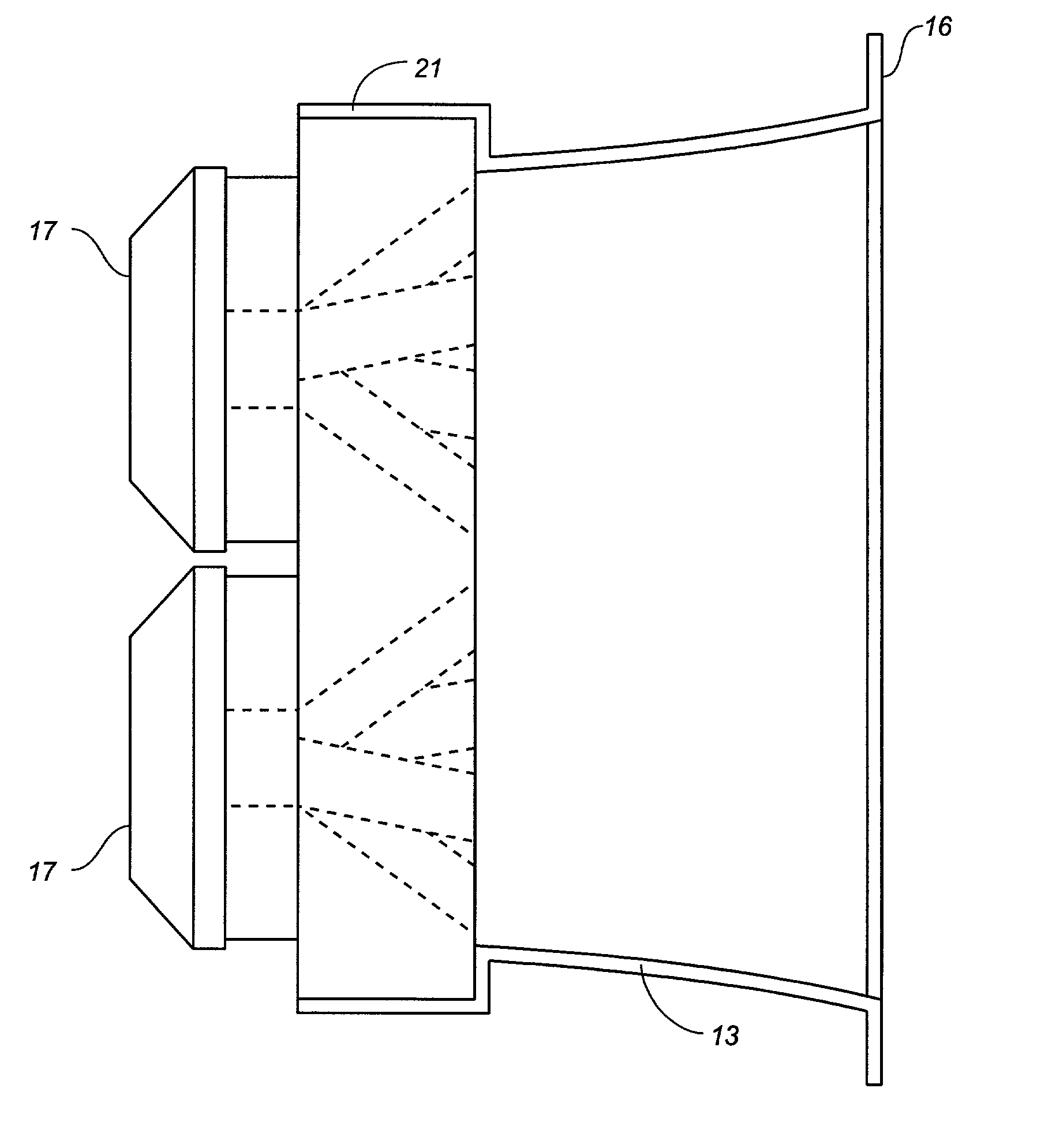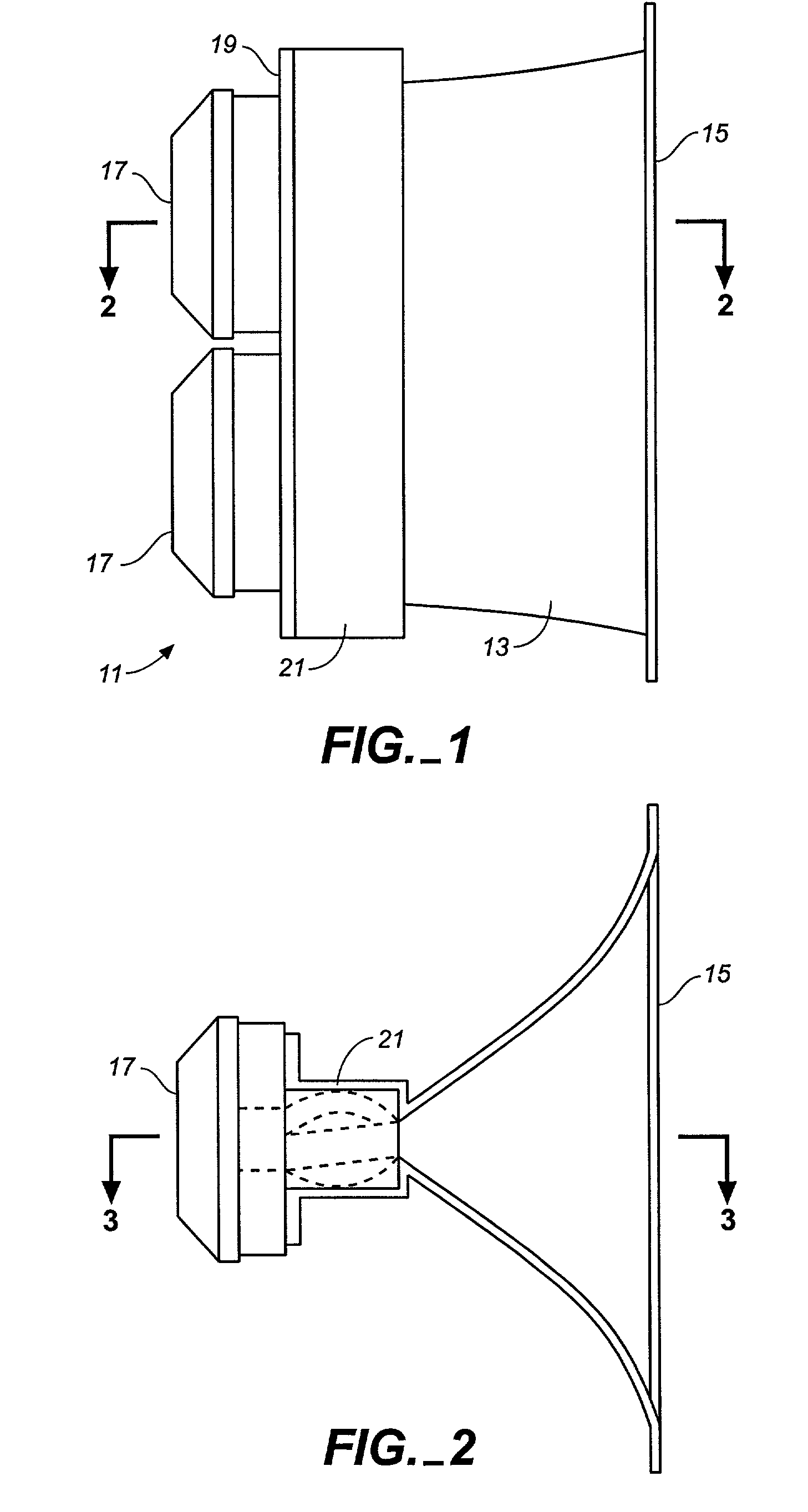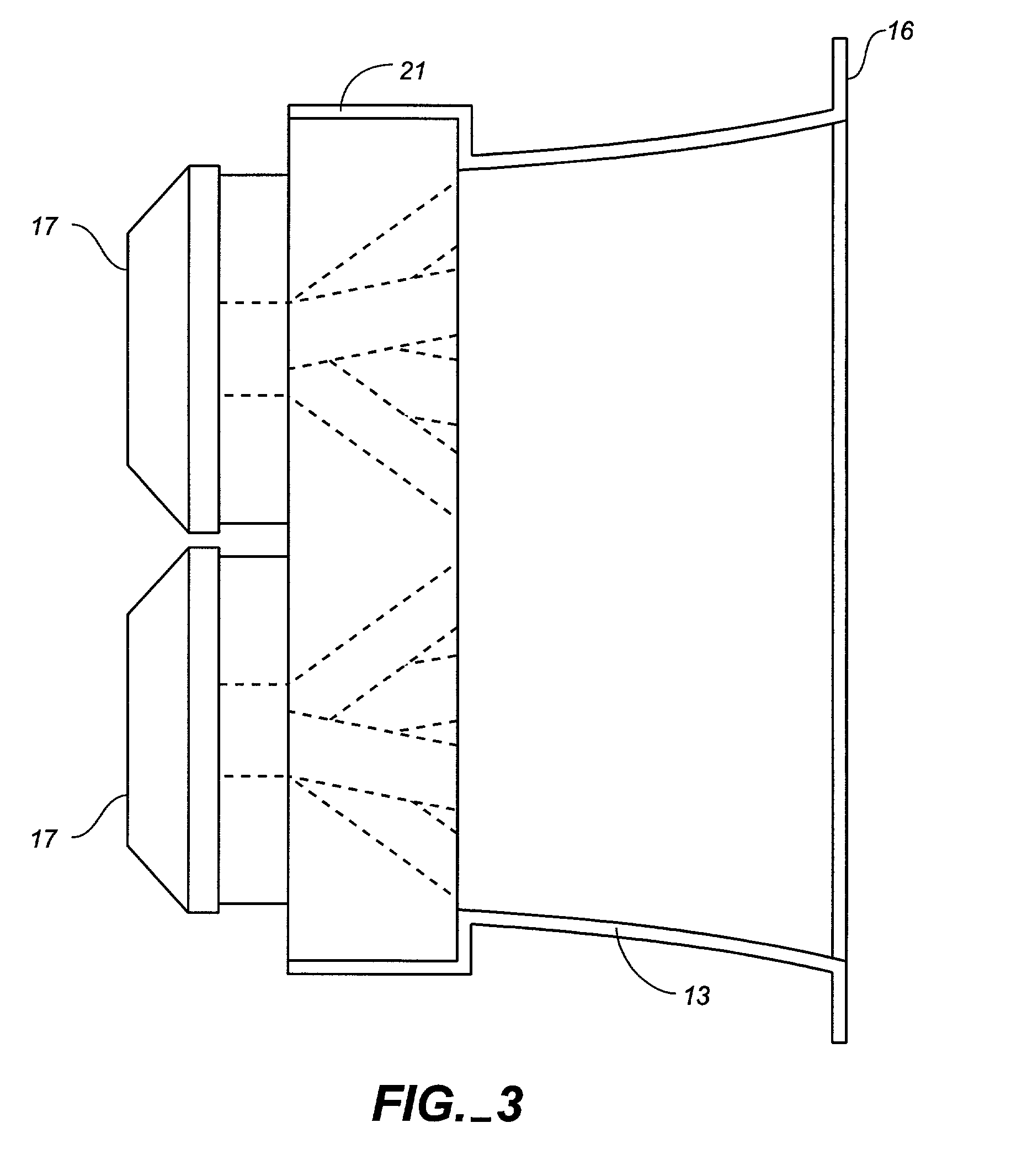Manifold for a horn loudspeaker and method
a manifold and horn technology, applied in the field of manifolds for horn loudspeakers, can solve the problems of increasing the distortion of the sound pressure wave as it passes through the waveguide, and achieve the effect of reducing the distortion
- Summary
- Abstract
- Description
- Claims
- Application Information
AI Technical Summary
Benefits of technology
Problems solved by technology
Method used
Image
Examples
Embodiment Construction
[0043] Referring to FIGS. 1-3 of the drawings, a horn loudspeaker system 11 includes a horn 13 having mouth end 15 and two closely spaced compression drivers 17 mounted to the horn's back end 19. The back end of the horn has an enlarged manifold mounting chamber 21 for holding the driver manifold hereinafter described. The placement of the driver manifold in mounting cavity 21 is illustrated in FIGS. 2 and 3, where a manifold is indicated by a phantom line representation of the acoustic power waveguides of a two driver manifold as hereinafter described.
[0044] The design of the horn of the horn loudspeaker system shown in FIGS. 1-3 is further illustrated in FIGS. 4-5. Referring to these figures, it can be seen that the horn's substantially square mouth 15 has a perimeter mounting flange 16 for mounting the horn to a speaker cabinet. As best shown in FIG. 5, flared vertical sidewalls 25 extend inwardly to form an elongated throat opening 27 which extends between slightly flared top an...
PUM
 Login to View More
Login to View More Abstract
Description
Claims
Application Information
 Login to View More
Login to View More - R&D
- Intellectual Property
- Life Sciences
- Materials
- Tech Scout
- Unparalleled Data Quality
- Higher Quality Content
- 60% Fewer Hallucinations
Browse by: Latest US Patents, China's latest patents, Technical Efficacy Thesaurus, Application Domain, Technology Topic, Popular Technical Reports.
© 2025 PatSnap. All rights reserved.Legal|Privacy policy|Modern Slavery Act Transparency Statement|Sitemap|About US| Contact US: help@patsnap.com



